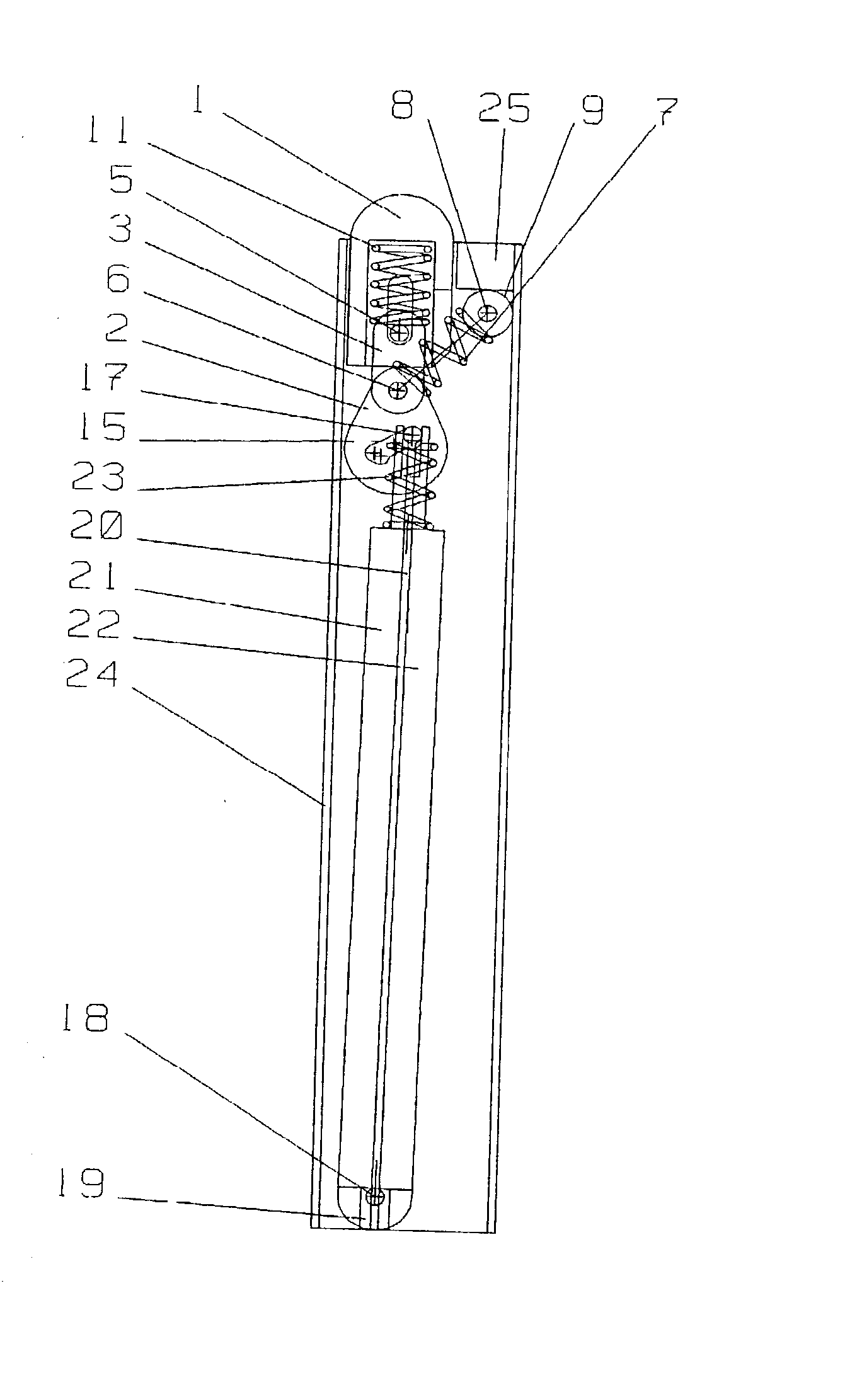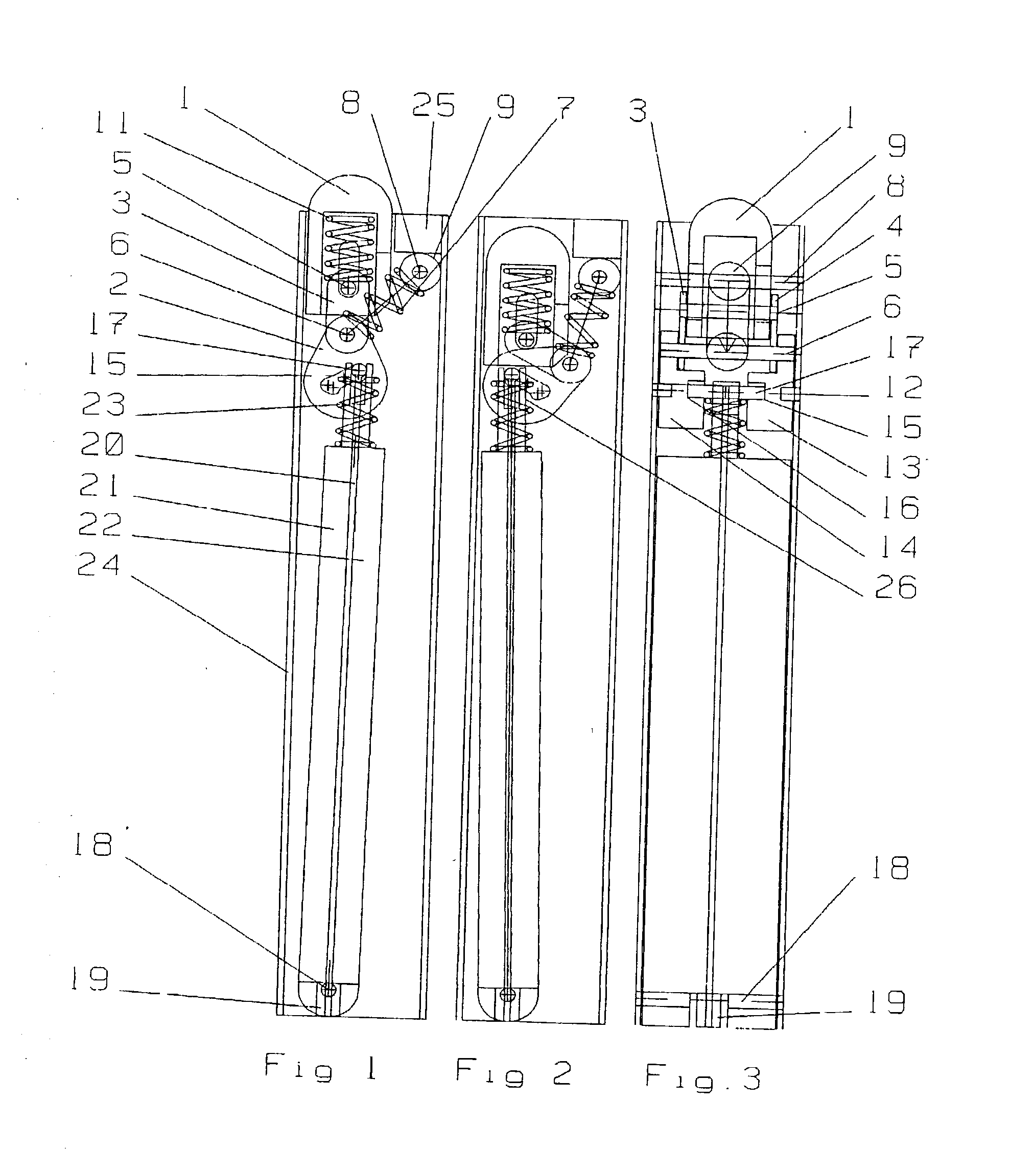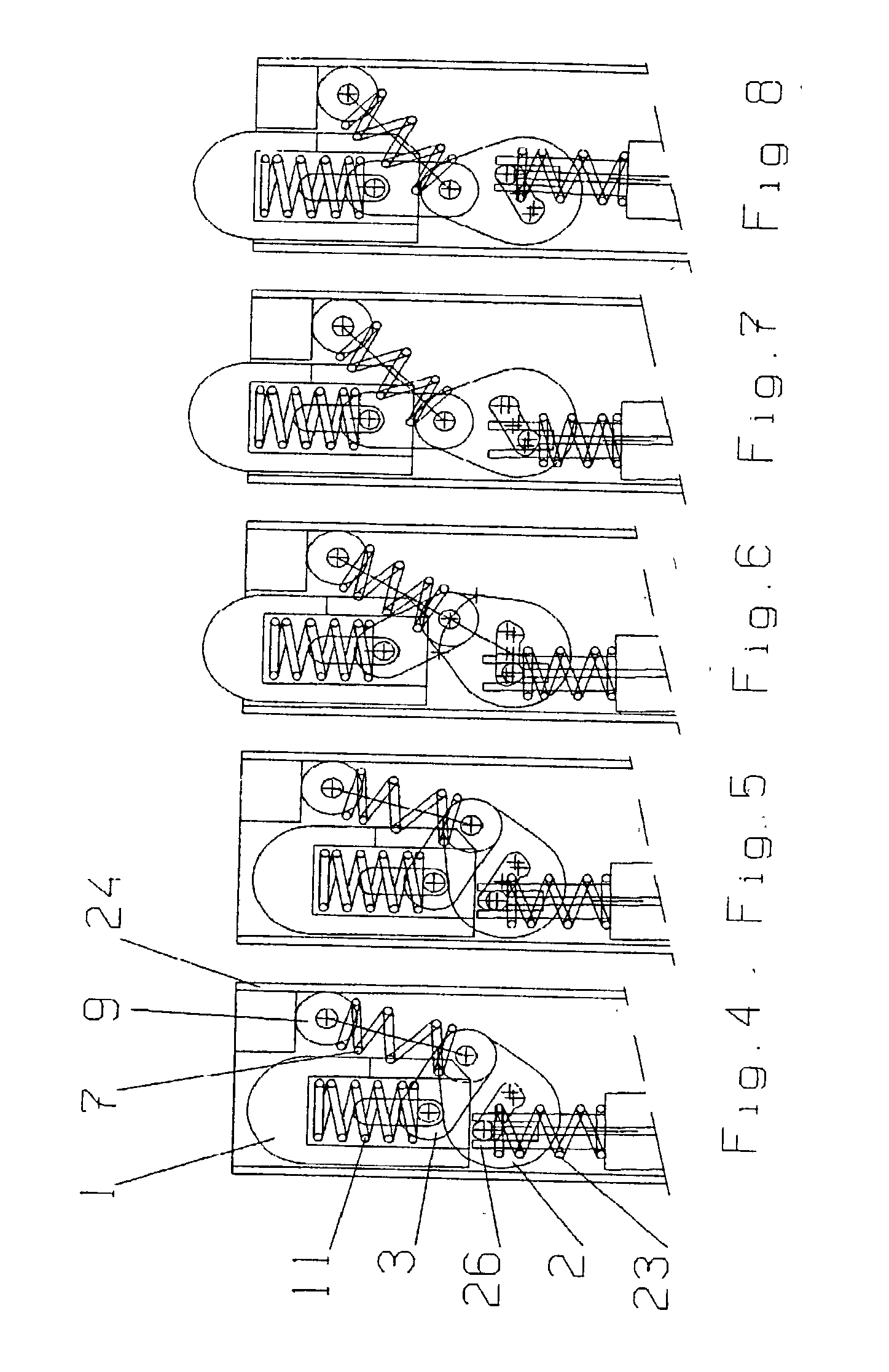Single dot tactile reading module driven by a shape memory wire
a single-dot tactile reading and shape memory technology, applied in repeater circuits, instruments, line-transmission, etc., can solve the problems of not allowing more modules, not using shape memory actuators in the commercially available tactile arrays of today, and still expensive modules
- Summary
- Abstract
- Description
- Claims
- Application Information
AI Technical Summary
Benefits of technology
Problems solved by technology
Method used
Image
Examples
Embodiment Construction
OF OTHER EMBODIMENTS OF THE INVENTION
[0051] FIGS. 9 and 10 illustrate a slightly different layout of the parts composing the tactile module which goal is to reduce by about 50% the height of the tactile module. The new layout is obtained by a rotation of about 60 degrees, around the axis of the cam 2, of the following parts: the slots 15 and 16, the spring 23, the plates 21 and 22, the wire 20 and the rod 18 to which is attached the lower end of the wire 20.
[0052] The new layout operates exactly as described for FIG. 4 to 8, the only change being that the thickness of the plates 21 and 22 decreases progressively from their lower part to their upper part, in order to prevent them from bumping into the space reserved for neighboring modules in the plane of FIGS. 9 and 10.
[0053] FIGS. 11 to 13 represent another embodiment of the present invention. In this embodiment, the tactile dot 1 is directly driven by the cam 2 through the rod 5 which goes through it and occupies during its motion...
PUM
 Login to View More
Login to View More Abstract
Description
Claims
Application Information
 Login to View More
Login to View More - R&D
- Intellectual Property
- Life Sciences
- Materials
- Tech Scout
- Unparalleled Data Quality
- Higher Quality Content
- 60% Fewer Hallucinations
Browse by: Latest US Patents, China's latest patents, Technical Efficacy Thesaurus, Application Domain, Technology Topic, Popular Technical Reports.
© 2025 PatSnap. All rights reserved.Legal|Privacy policy|Modern Slavery Act Transparency Statement|Sitemap|About US| Contact US: help@patsnap.com



